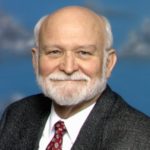Home › Forums › GENERAL DISCUSSION – Articles, Personal, Encouragement, Prayer, Testimonies, Fellowship, Missions , Revival, etc. › Prayer — The Fabric of the American Culture – NATIONAL DAY OF PRAYER
- This topic has 0 replies, 1 voice, and was last updated 5 years, 11 months ago by
 Ron McGatlin.
Ron McGatlin.
-
AuthorPosts
-
May 3, 2018 at 6:54 am #9708
 Ron McGatlinKeymaster
Ron McGatlinKeymasterPrayer — The Fabric of the American Culture
Today, May 3, 2018, is America’s National Day of Prayer. It became a permanent fixture on America’s calendar of national observances in May of 1988 when President Ronald Reagan signed a bill into law designating the first Thursday of May as America’s official, annual National Day of Prayer. I had the privilege, as a member of America’s National Prayer Committee, to be in the White House that day to watch President Reagan sign this unprecedented historic document. Today, it may surprise you to know that more than 45,000 different public gatherings will be held all across America — on state capitol steps, in churches and in public arenas, including a national celebration in the famed Statuary Hall of the U.S. Capitol building. It is estimated that some 5 million Americans, and possibly many more, will participate in some way in united, public prayer on this very day. But how did this all begin?
From the earliest days of our republic, prayer has been foundational to the very fabric of our culture. Proclamations for a National Day of Thanksgiving, Fasting and Prayer were common. For example, from 1775, when the first Thanksgiving proclamation was issued, and up to 1815, a 40-year span, 42 different proclamations for prayer were issued (an average of about one per year). Of those 42, 13 focused on “Fasting, Humiliation and Prayer.” I’ll highlight two of these proclamations, one from our nation’s earliest years and another from the Civil War almost a century later.
In 1777 a proclamation called for a Day of Fasting, Humiliation and Prayer that was to include “humble penitence confessing [our] manifold sins and aggravated transgressions imploring through Jesus Christ our Lord, the pardoning mercies of almighty God…” What amazing wording. The proclamation ends with this directive: “All servile labor and recreation are hereby forbidden on said day!” Imagine that wording getting by the “politically correct” censors of our day!
But perhaps most memorable of such national proclamations was issued in 1863 when President Abraham Lincoln challenged all Americans:
…to confess their sins… and the sins of our nation…
and to recognize the sublime truths… of Holy Scriptures,
and proven by all history, that those nations only are blessed
whose God is the Lord…Fast forward to 1952 and our modern National Day of Prayer. During the Korean War, a young 34-year-old evangelist named Billy Graham stated in early 1952 that it would be deeply significant “at this time of crisis to see the leaders of our country kneeling before almighty God in prayer.” Congressman Percy Priest of Tennessee heard these words from the young evangelist and referred to them before Congress as “a challenge to our nation for a National Day of Prayer.”
No doubt these words reached President Truman’s desk, perhaps beside the president’s famed plaque that read “The Buck Stops Here,” because in April of 1952 Truman signed a bill stating “a National Day of Prayer must be declared by each subsequent President at an appropriate date of his choosing.”
Although this was surely a positive development, the phrase “an appropriate date of his choosing” was too general and lacked the impact of a fixed day, like Memorial Day, Thanksgiving or Martin Luther King Jr. Day. Furthermore, no broad coalition of spiritual leaders existed at the time to promote the cause.
That changed in the mid-1970s when Vonette Bright, co-founder of Campus Crusade for Christ with her husband, Bill, caught the vision. In 1976, Vonette hosted a meeting at the Christian Embassy in Washington during which seeds for a National Prayer Committee were planted. I had the privilege of being in that meeting, and all of us present felt that God was giving birth to something destined to become a new movement of prayer for our nation. The National Prayer Committee became official in 1979 and began contending (“lobbying” might be a better word) for a fixed National Day of Prayer.
Breakthrough came in 1986 when Senator Strom Thurmond of South Carolina, at the encouragement of the National Prayer Committee, offered a bill before the Senate for just such a fixed day. Almost immediately, 13 senators and 90 congressmen endorsed the bill. Two respected rabbis — Joshua Haberman and Marc Tanenbaum — also voiced full support of the bill. On May 5, 1988, the bill passed the Senate unanimously, followed quickly by overwhelming passage in the House. Final victory came Thursday, May 8, 1988, when President Ronald Reagan signed the bill into law. The first Thursday of May was now America’s official, annual National Day of Prayer!
Today, America’s National Day of Prayer is thriving. Not only will some 5 million Americans participate in some form of united, public prayer, but Christians in other nations will join in as well. And I am rather certain, when all this praying is completed — somewhere in the last time zone in America, the Hawaiian Islands — all will have prayed in agreement with President Lincoln’s words, that both “the Holy Scriptures and history itself” prove “that those nations only are blessed whose God is the Lord!”
Editor’s Note:
Dick Eastman is the International President of Every Home for Christ, a global evangelism ministry with 189 offices throughout the world. Dick is also a founding member of America’s National Prayer Committee and has served as its president for more than 20 years.
Make My Gift -
AuthorPosts
- You must be logged in to reply to this topic.
